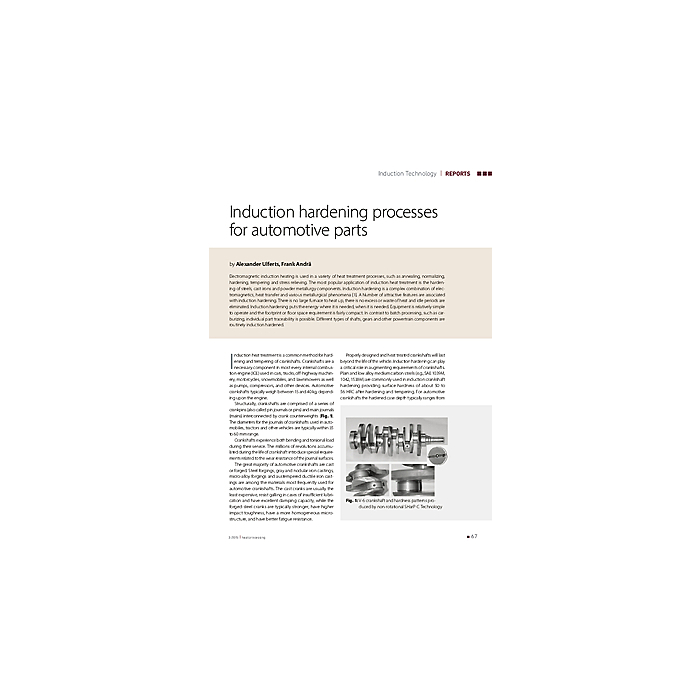Induction hardening processes for automotive parts
€4.90
In stock
article number
00541_2015_03_02
Electromagnetic induction heating is used in a variety of heat treatment processes, such as annealing, normalizing, hardening, tempering and stress relieving. The most popular application of induction heat treatment is the hardening of steels, cast irons and powder metallurgy components. Induction hardening is a complex combination of electromagnetics, heat transfer and various metallurgical phenomena [1]. A Number of attractive features are associated with induction hardening. There is no large furnace to heat up, there is no excess or waste of heat and idle periods are eliminated. Induction hardening puts the energy where it is needed, when it is needed. Equipment is relatively simple to operate and the footprint or floor space requirement is fairly compact. In contrast to batch processing, such as carburizing, individual part traceability is possible. Different types of shafts, gears and other powertrain components are routinely induction hardened.
| Authors | Alexander Ulferts / Frank Andrä |
|---|---|
| Publishing Date | 1 Mar 2015 |
| Format | |
| Zeitschrift | heat processing - Ausgabe 03 2015 |
| Publisher | Vulkan-Verlag GmbH |
| Language | English |
| Title | Induction hardening processes for automotive parts |
| Description | Electromagnetic induction heating is used in a variety of heat treatment processes, such as annealing, normalizing, hardening, tempering and stress relieving. The most popular application of induction heat treatment is the hardening of steels, cast irons and powder metallurgy components. Induction hardening is a complex combination of electromagnetics, heat transfer and various metallurgical phenomena [1]. A Number of attractive features are associated with induction hardening. There is no large furnace to heat up, there is no excess or waste of heat and idle periods are eliminated. Induction hardening puts the energy where it is needed, when it is needed. Equipment is relatively simple to operate and the footprint or floor space requirement is fairly compact. In contrast to batch processing, such as carburizing, individual part traceability is possible. Different types of shafts, gears and other powertrain components are routinely induction hardened. |
Write Your Own Review

